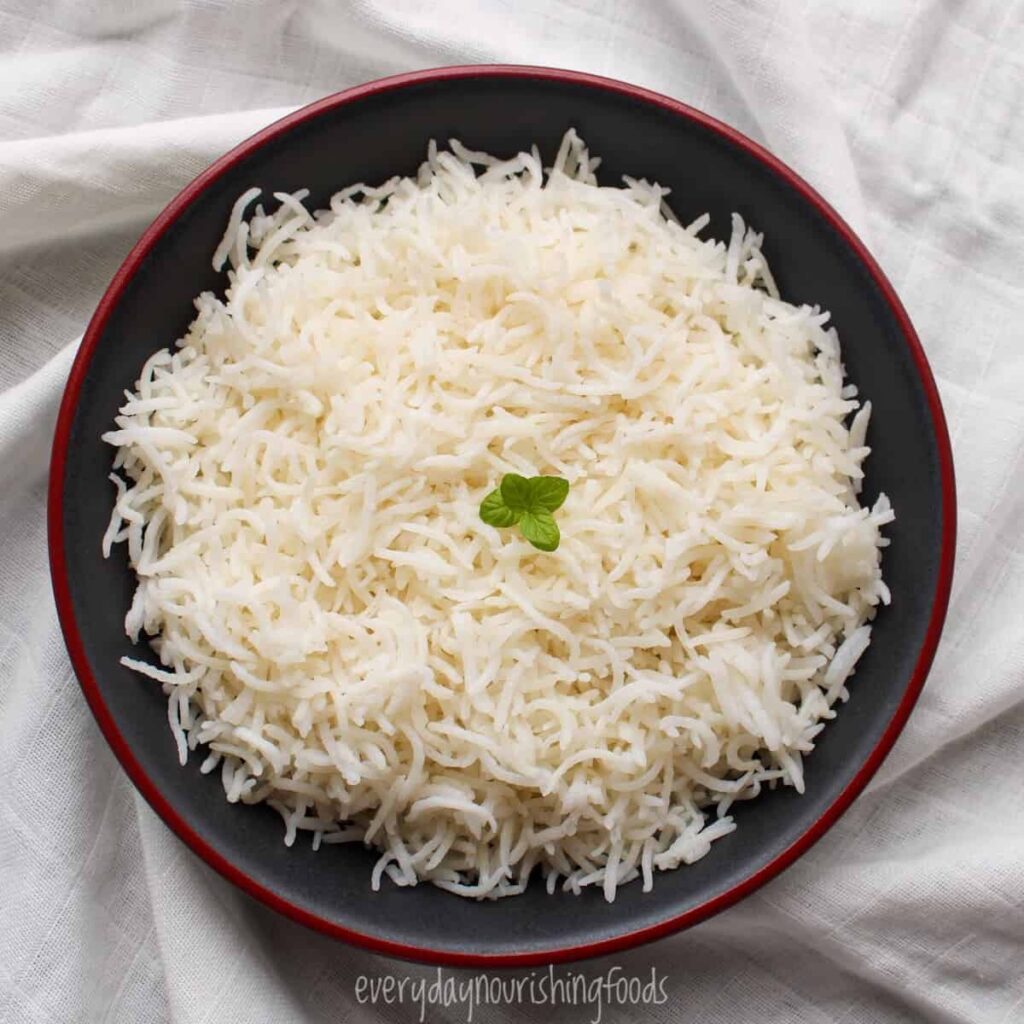When cooked with the proper basmati rice-to-water ratio, basmati rice becomes light, fluffy, and aromatic. However, too much or too little water can lead to mushy, sticky, or undercooked grains.
Use the Water-to-Rice Ratio Calculator below to get the perfect measurement for cooking basmati rice using a Rice Cooker, Stovetop, or Instant Pot.
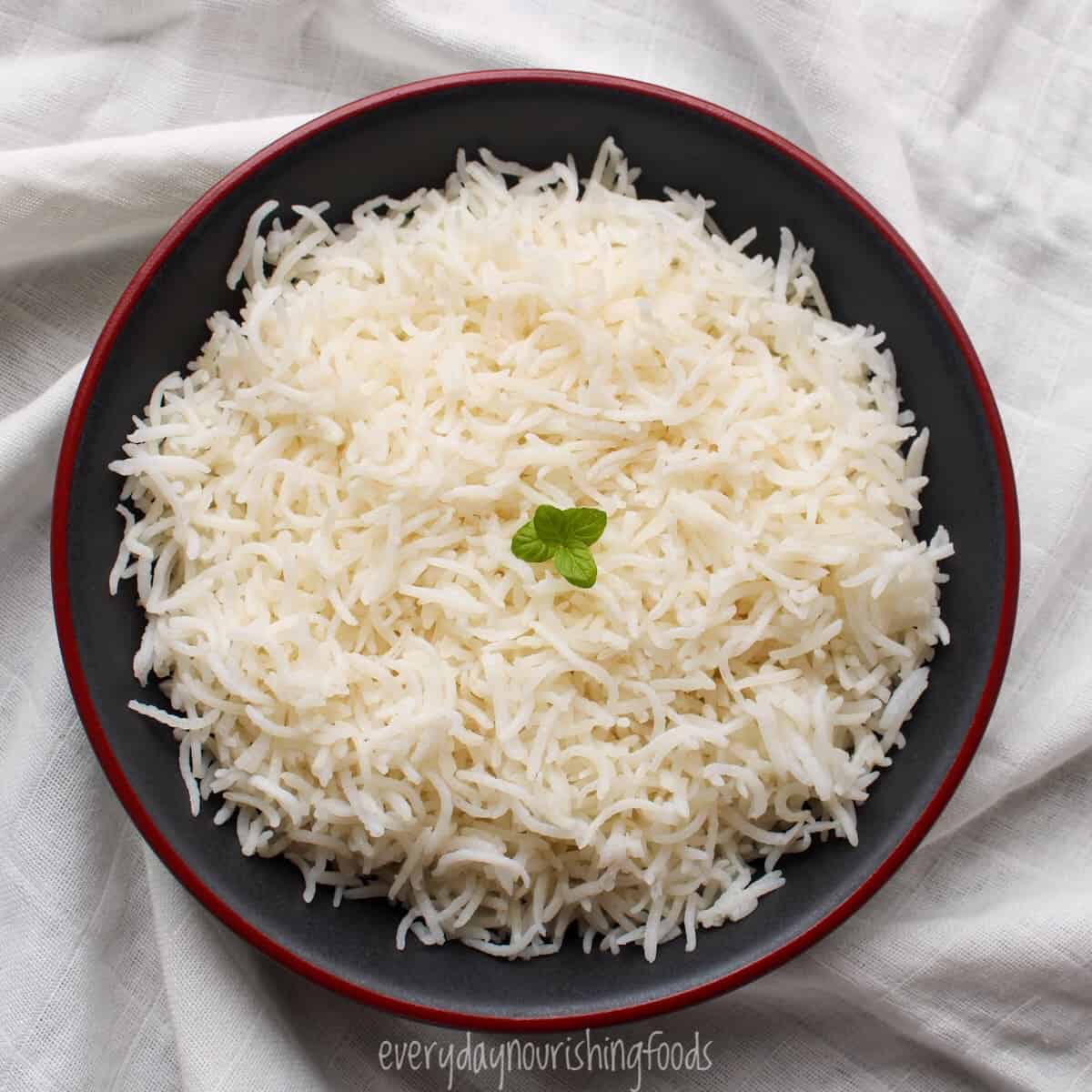
I’ve been cooking Indian rice dishes for over 15 years, testing different water ratios, cooking methods, and rice varieties to get the perfect texture every time. This Basmati Rice Water Ratio Calculator is based on real experience, tested techniques, and expert best practices.
Whether you’re using aged or new rice, soaked or unsoaked, in an Instant Pot, stovetop, or rice cooker, this tool gives you precise measurements for the best results.
Jump to:
Why Water-to-Rice Ratio Matters
The amount of water you use directly affects the texture and quality of your basmati rice.
Too much water? Rice becomes soft and mushy.
Too little water? Rice stays dry and undercooked.
Perfect ratio? Fluffy, non-sticky, separate grains every time.
Different cooking methods require different water ratios. Soaked rice also absorbs some water, reducing the amount needed for cooking. Instead of guessing, use the calculator below to get precise measurements.
Water-to-Rice Ratio Calculator
Water-to-Rice Ratio Calculator
Recommended Water: – cups
How to use this calculator:
- Enter the amount of rice you are cooking.
- Select if the rice is soaked or unsoaked.
- Choose your preferred texture (Soft, Medium, Firm).
- Pick your cooking method (Rice Cooker, Stovetop, Instant Pot).
- Click Calculate to get the recommended water ratio.
Use this as a quick reference guide to cook basmati rice without guesswork!
How to Cook Basmati Rice (Three Simple Methods)
Once you have the correct water ratio, follow one of these cooking methods:
Rice Cooker Basmati Rice Recipe: This is the easiest, hands-free way to get perfectly cooked basmati rice. Just rinse, add water, and let the cooker do the work.
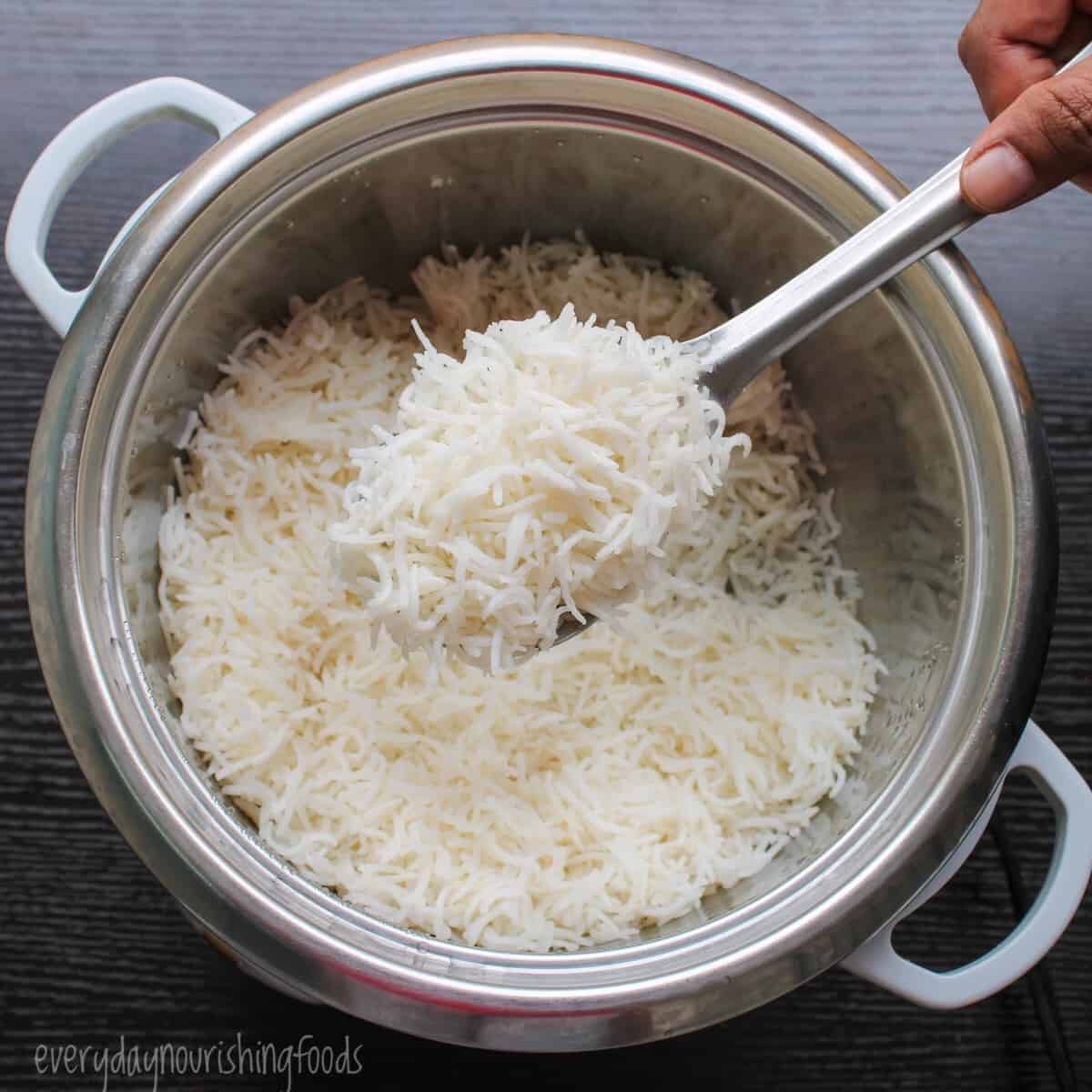
Stovetop Basmati Rice Recipe: This traditional method allows you to control texture and doneness. It is best for cooking small or large batches.
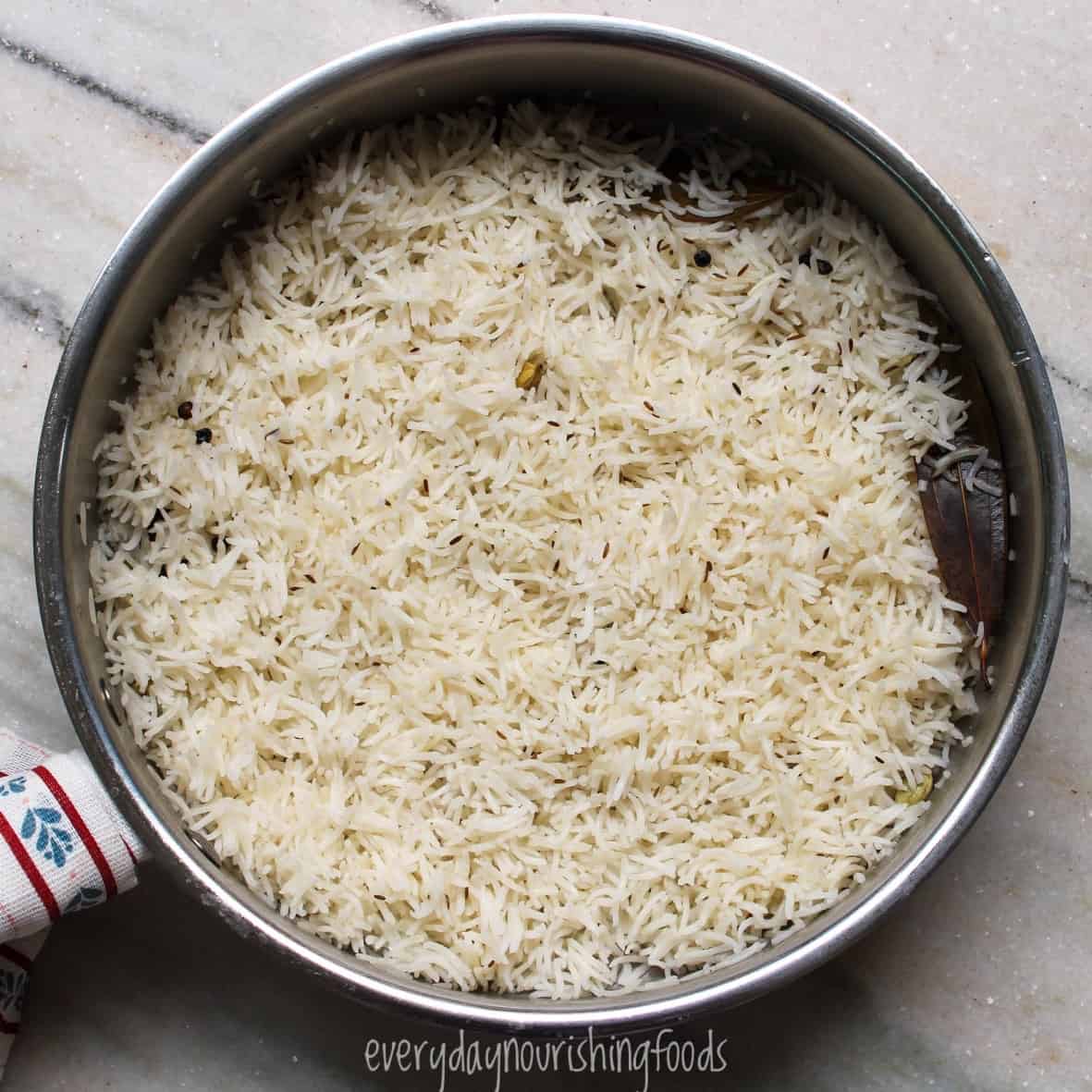
Instant Pot Basmati Rice Recipe: This is the quickest way to get fluffy basmati rice in minutes, with a set-it-and-forget-it approach.
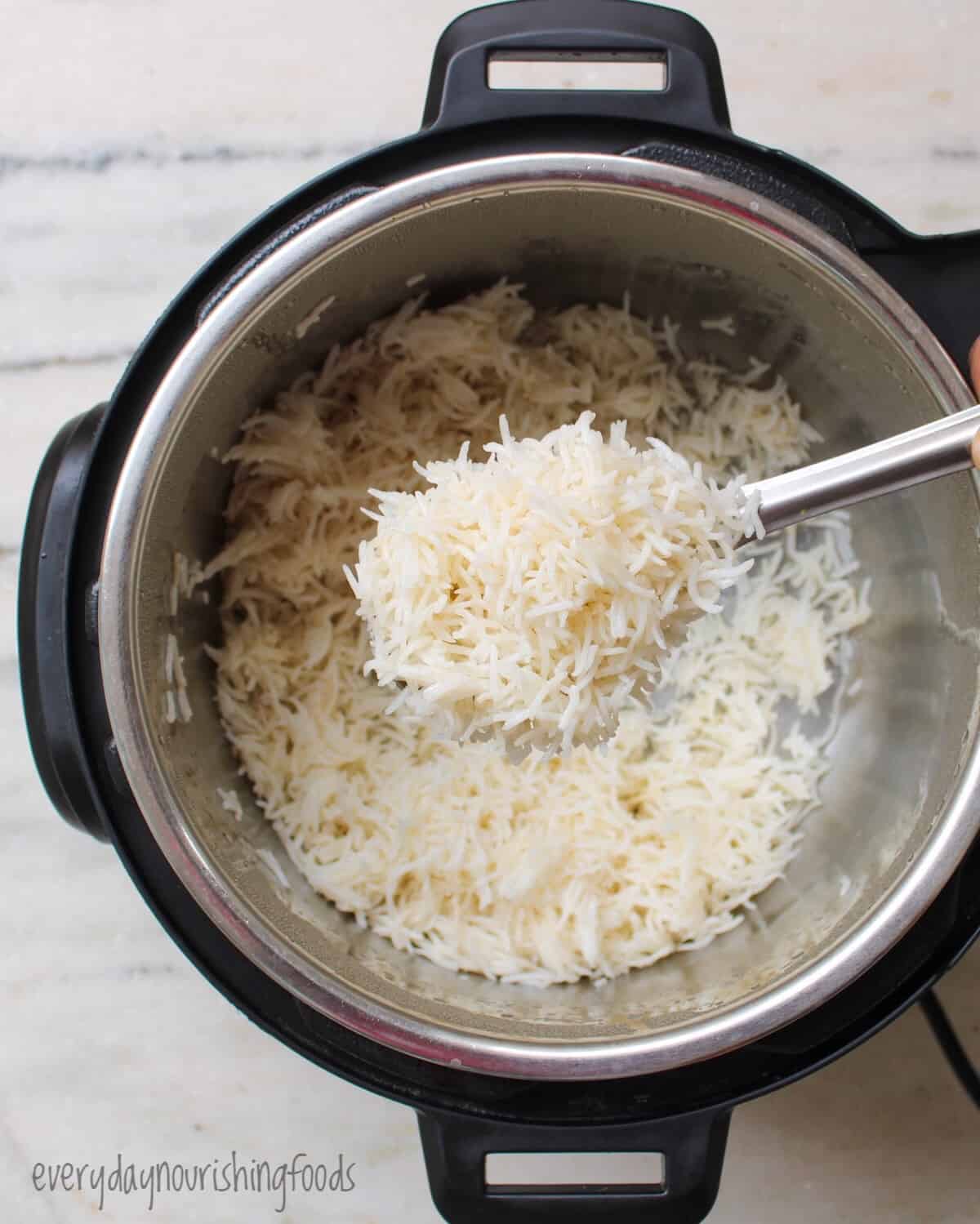
Pick the method that works for you, and use the calculator above to get the correct water measurement!
Troubleshooting Guide: Fix Common Rice Issues
Having trouble with your basmati rice? Here’s how to fix common problems:
| Problem | Possible Cause | How to Fix It |
| Rice is mushy | Too much water | Reduce water slightly, and let it rest for 10 minutes before fluffing. |
| Rice is undercooked | Not enough water | Add a little hot water, cover, and steam for 5-10 minutes. |
| Rice sticks to the bottom | High heat or not enough rinsing | Use a heavy-bottomed pot and rinse rice well. |
For best results, always rinse your basmati rice well before cooking and let it rest after cooking to even out moisture.
FAQs About Cooking Basmati Rice
It depends on the cooking method and texture you prefer. Use the calculator above for precise measurements.
Soaking helps the rice cook evenly and absorb less water, which improves texture. For soaked rice, reduce the water ratio slightly (use the calculator for exact amounts).
Yes! The stovetop and Instant Pot methods are great alternatives.
Getting the water-to-rice ratio right is the key to perfectly cooked basmati rice. Use the calculator above to get precise measurements and avoid common mistakes.
Try different cooking methods and find what works best for you. If you have questions, comment below, and I’ll be happy to help!

